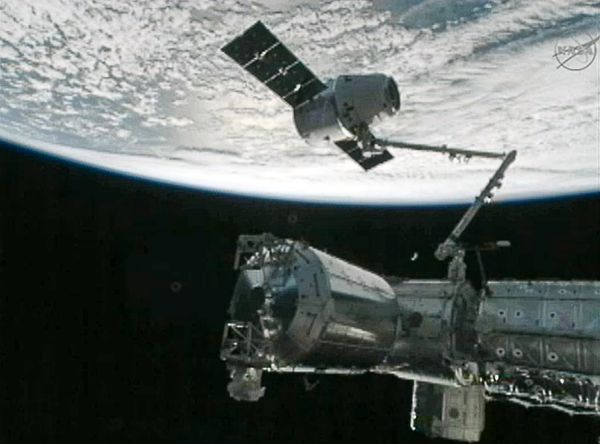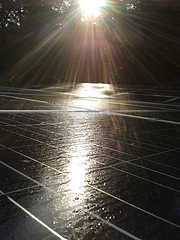Tired of Southern Company CEO Fanning’s
maybe “next decade” for solar power?
 Tired of Georgia Power’s Bowers
trying to push solar off for fifty years?
Let’s hear from somebody who takes on big tasks and gets them done:
Elon Musk, who’s already built a rocket that is resupplying the International
Space Station, and who is also building all-electric cars.
Tired of Georgia Power’s Bowers
trying to push solar off for fifty years?
Let’s hear from somebody who takes on big tasks and gets them done:
Elon Musk, who’s already built a rocket that is resupplying the International
Space Station, and who is also building all-electric cars.
Carl Hoffman wrote for Smithsonian magazine December 2012, Elon Musk, the Rocket Man With a Sweet Ride
When he’s not launching rockets, Musk is disrupting the notoriously obdurate automobile industry (see National Treasure, p. 42). While industry giants like Chevrolet and Nissan and Toyota were dithering with electric-gasoline hybrids, this upstart kid said he would design and manufacture an all-electric car that would travel hundreds of miles on a single charge. The Tesla Roadster hit the streets in 2008 with a range of 200 miles, and the far more
functional Model S, starting at $57,000, was introduced in June. It’s the world’s first all-electric car that does everything my old gasoline version does, only better. The high-end model travels 300 miles on a single charge, leaps from zero to 60 in 5.5 seconds, slows from 60 to a dead stop in 105 feet, can seat up to five, has room for mulch bags and golf clubs, handles like a race car and its battery comes with an eight-year, 100,000-mile warranty. If you charged it via solar panels, it would run off the sun. One hundred a week are being produced in a former Toyota factory in Fremont, California, and nearly 13,000 people have put deposits on them….
And since that story: 2013 Motor Trend Car of the Year: Tesla Model S; Shocking Winner: Proof Positive that America Can Still Make (Great) Things by Angus MacKenzie, January 2013, Motor Trend. That can’t hurt sales, and even before that, Tesla already sold out its Model S for 2012 and beat analyst estimates for financial performance, sending its stock price up, wrote Seeking Alpha 3 November 2011. Back to the Smithsonian article.
Although the highest-priced Model S has a range of 300 miles, it still takes nine hours to recharge on a standard 240-volt electrical hookup, making your classic long family drive impractical, and the single largest barrier to widespread electric vehicle use. But in
late October, Tesla planned to open in California the first six of a planned network of 100 electrical filling stations around the U.S., dubbed “superchargers,” which pump electricity at 90 kilowatts, adding 250 miles to the highest-priced Model S’s battery (the lowest-cost model doesn’t yet have this capability) in one hour. Where the filling stations can be solar powered, that means zero fossil fuels and zero emissions. Drive in, grab lunch, and in 30 minutes you’re cruising with another 120-odd miles of range. With an electric vehicle that has a reasonable range and rapid filling stations available, the barriers to electric cars fall; as more people get them, the laws of mass production dramatically reduce their price. Bingo; why would anyone have a car that costs 70 bucks to fill up and pollutes the planet?
And it actually only takes one hour at home to charge for 62 miles of range, and that’s plenty for the average daily commute. So if you have solar panels on your house or office, you can probably recharge an electric car at home or while you work.
As if the space and cars weren’t enough to tackle, Musk is simultaneously trying to revolutionize the energy industry as well. He is the biggest investor and chairman of the board of Solar City, one of the largest suppliers of solar energy technology and a key piece of his aim to change not just energy consumption, but energy production.
You remember SolarCity, which does everything from financing to installation. SolarCity currently operates in Arizona, California, Colorado, Connecticut, Delaware, Hawaii, Maryland, Massachusetts, New Jersey, New York, Oregon, Pennsylvania, Texas, Washington, and Washington D.C. But not in Georgia, because of that 1973 Territorial Electric Service Act that Fanning and Bowers are not interested in changing (I’ve asked both of them in person). Meanwhile, SolarCity has gone public on Nasdaq with symbol SCTY.
The solar train is leaving the station, while SO and Georgia Power continue wasting Georgia’s resources on their three-legged nuclear regulatory-capture stool boondoggle on the Savannah River.
Will Elon Musk singlehandedly drive a Tesla Model S to Georgia,
 depositing solar charging stations as he goes, while deploying
SolarCity rooftop solar panels?
Maybe he will; maybe he won’t (although so far he’s got quite
a track record of success).
Even if that particular entrepeneur fails,
Moore’s Law will keep driving solar prices down
until even Bowers and his uncle Fanning cry “uncle”
and we finally get relief from that rusty 1973 law
and solar jobs and energy independence rise in the south Georgia sun.
depositing solar charging stations as he goes, while deploying
SolarCity rooftop solar panels?
Maybe he will; maybe he won’t (although so far he’s got quite
a track record of success).
Even if that particular entrepeneur fails,
Moore’s Law will keep driving solar prices down
until even Bowers and his uncle Fanning cry “uncle”
and we finally get relief from that rusty 1973 law
and solar jobs and energy independence rise in the south Georgia sun.
-jsq
Short Link: